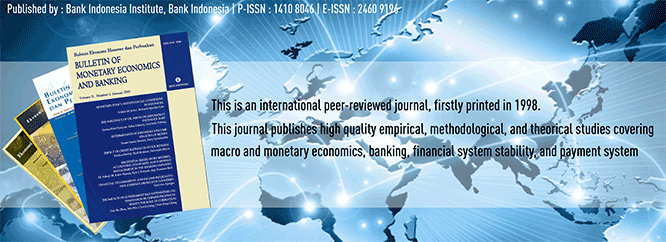
Document Type
Article
Abstract
This paper examines the factors that determined the Indonesian rupiah against US dollar nominal exchange rate post crisis period. The effect of the oil prices and the interaction of supply and demand in the foreign exchange market are included as part of explanatory variables besides other fundamentals, using an Error Correction Model (ECM). The use of composite model that incorporates a number of familiar approaches in exchange rate determination is found to outperform the model based on one single approach in term of their forecast performance. The estimation results show that the increase in oil price will depreciate the rupiah exchange rate and that risk factor is the most important factor that influences the rupiah development.JEL Classification: C22, C52, C53, E31, F31, F47Keywords: Exchange Rate, ECM, composite model, BEER, CEER, forecasting, political risk, economic risk, financial risk.
Recommended Citation
Husman, Jardine Ariena
(2005)
"ESTIMASI NILAI TUKAR RUPIAH PASKA KRISIS: Pendekatan Model Komposit,"
Bulletin of Monetary Economics and Banking: Vol. 8:
No.
3, Article 4.
DOI: https://doi.org/10.21098/bemp.v8i3.139
Available at:
https://bulletin.bmeb-bi.org/bmeb/vol8/iss3/4
First Page
1
Last Page
24
Creative Commons License

This work is licensed under a Creative Commons Attribution-NonCommercial 4.0 International License
Country
Indonesia
Affiliation
Bank Indonesia







